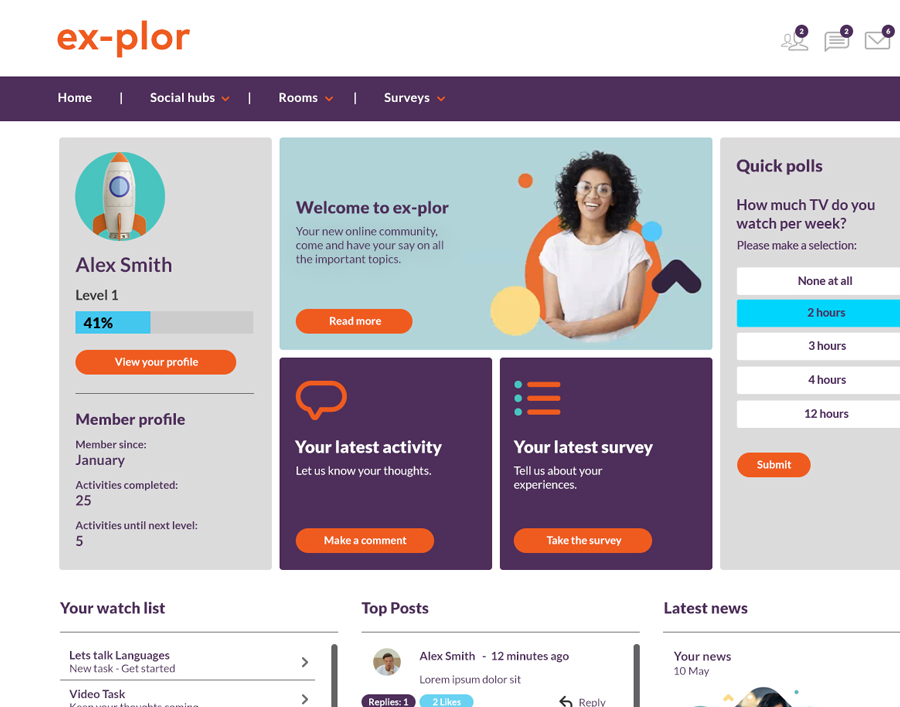Hungry for more?
Thanks for reading our blog! If you want to find out more then be sure to get in touch.
We are always happy to provide advice, guidance or tell you a little bit more on how we can help you brand.
Email: enquiry@researchbods.com
So, you’re sold. You know what an insight community is, and you know the benefits. You know you want to implement an ongoing community solution to inform strategic and tactical business decisions, but how? Keep reading to learn how to implement an insight community and how to develop a customer insight strategy…
As covered in our article, ‘what is an insight community’, there are a lot of components to an insight community, each of which plays an integral part in helping you to gather, quality control, evaluate, share and socialise insights from your customers. To recap, to implement an insight community you’ll need:
To develop an effective customer insight strategy, you can ask yourself a series of questions to help you understand your goals and desired outcomes, as well as other details of your programme. This ensures success and a good ROI for your project. However, insight communities are versatile and capable of fulfilling a wide variety of objectives, so factor this into your strategy. You might want to achieve one specific thing now, but that doesn’t mean you can’t use your insight community to achieve other things in the future.
What do you want to get out of this? Do you just want to listen to what your customers are saying, or do you have a specific objective/purpose for the community? For example, if your end goal is to improve customer experience, you might end up studying multiple touchpoints using diary study tools. You might use A/B concept testing, heatmapping or eye tracking tools to enhance marketing & comms. You might have less specific goals, such as de-risking strategic decision making, or driving innovation, for which you could use a combination of activities. In reality, you’ll use a wide variety of tools and techniques for any given objective, but asking these questions early on will allow you to plan your insight community accordingly.
The answer to this may seem obvious; your insight community should be filled with your customers. However, certain objectives might require non-customers. You might want to find out why consumers choose a competitor’s offering to better understand how to target and win them as customers. You might be developing new products or services aimed at a slightly different demographic to your main product line. You’ll also need to understand where and how to recruit members, as well as your budgets and resource allocated to this task.
What will motivate my members to participate and what budget do I have to support this? Different brands and products generate different profiles of customer, and this needs to be factored into rewards and incentives. For example, the customer base of a luxury car brand might be more affluent, and usual financial incentives (prize draws & vouchers) might not be enough to motivate them to remain engaged and complete activities. Access to brand-related experiences or exclusive early access to news, features or products would likely be more effective options in this case.
Do I want to keep my members tightly focussed on things like surveys, or do I want more open-ended discussion? These questions tie back into the purpose of your insight community. What you’re trying to achieve will dictate the types of activities you’ll run. In likelihood, you’ll use most activities types at least once at some point, but it’s important to have an idea of which activities you’ll run most frequently so you can factor it into key decisions and your strategy as a whole.
